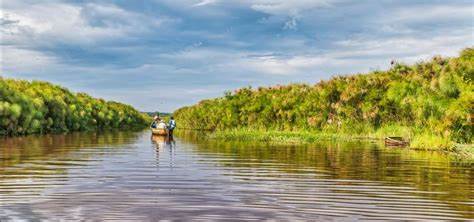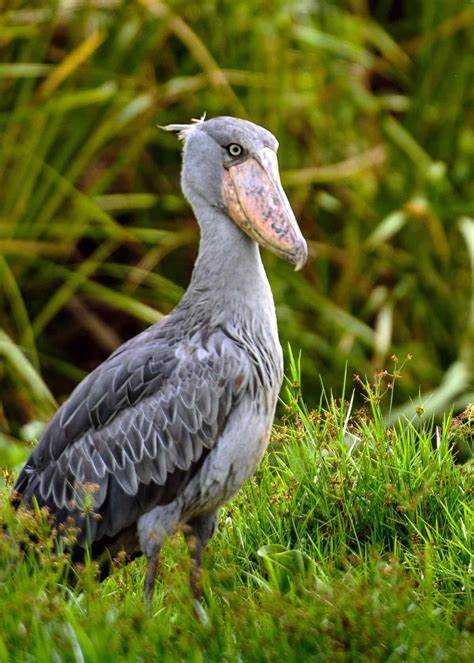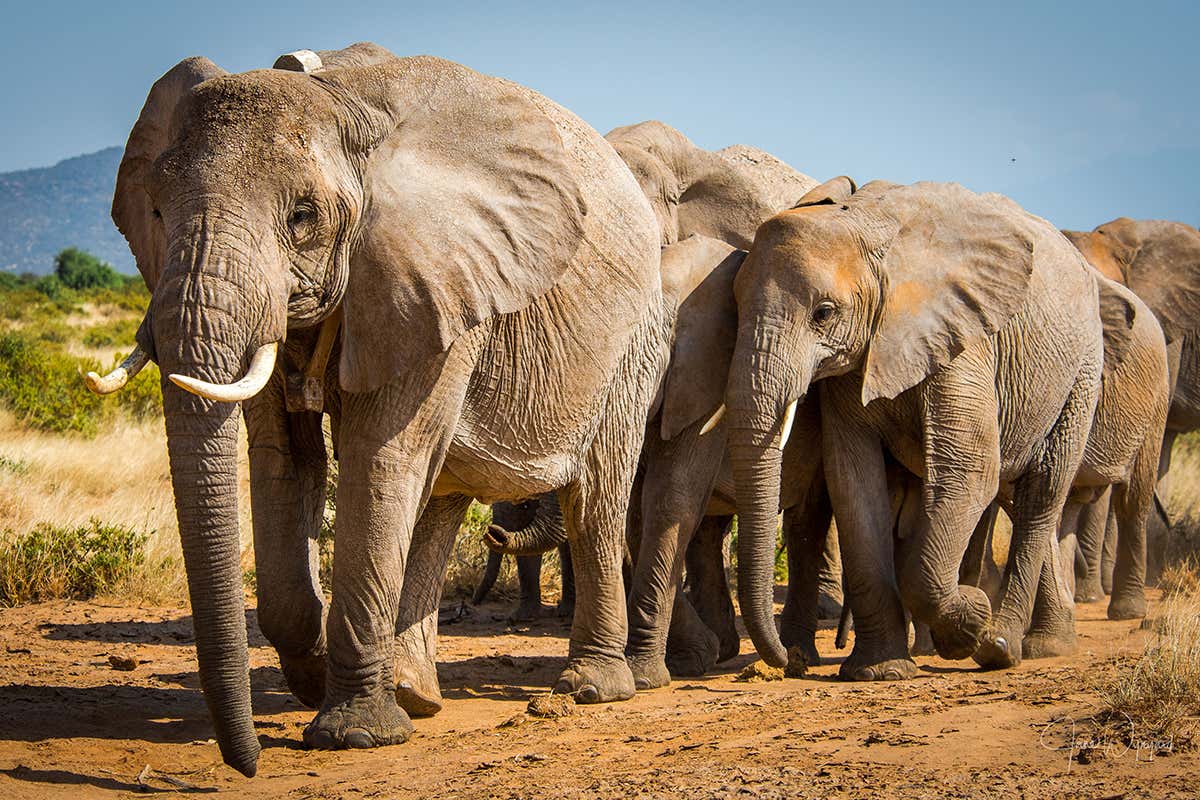Mabamba Swamp is nestled in the heart of Uganda, this mystical wetland is home to one of the most majestic creatures you will ever encounter – the shoebill.
Standing up to 5 feet tall with a wingspan over 7 feet wide, the shoebill is a creature straight out of a fairy tale. Its unique appearance, resembling a prehistoric bird, has earned it the nickname “whale head.” With its large, sturdy bill and piercing, otherworldly eyes, the shoebill is a sight to behold.
But the magic of the Mabamba Swamp doesn’t stop at the shoebill. This captivating ecosystem is a haven for countless other species, from colorful frogs and dazzling butterflies to rare orchids and towering papyrus reeds. As you venture through the swamp’s labyrinth of water channels and thick vegetation, you’ll witness nature’s symphony, orchestrated by a chorus of birds and frogs.
Join us on an unforgettable journey as we delve into the secrets of the Mabamba Swamp, where every step uncovers a new wonder, and every breath is filled with the essence of untamed beauty.

The habitat and unique characteristics of the Shoebill
The shoebill, also known as “whale head” due to its unique appearance, is a bird that stands up to 5 feet tall with a wingspan over 7 feet wide. Its large, sturdy bill and piercing, otherworldly eyes make it a sight to behold. This prehistoric-looking creature is truly one of nature’s most fascinating creations.
The Mabamba Swamp provides the perfect habitat for the shoebill. The swamp is characterized by its dense vegetation, including towering papyrus reeds, which create a safe haven for these magnificent birds. The shallow water channels and abundant fish populations in the swamp also serve as a prime hunting ground for the shoebill, ensuring their survival in this unique ecosystem.
The shoebill’s bill is its most distinctive feature, and it plays a crucial role in its survival. This large, powerful bill is designed to snatch up its prey, which primarily consists of fish, frogs, and small reptiles. The shoebill’s bill is so strong that it can easily crush the bones of its prey, allowing it to consume its meal with ease.
The importance of Mabamba Swamp as a natural habitat for the Shoebill
The Mabamba Swamp is of utmost importance for the survival of the shoebill. As a wetland ecosystem, the swamp provides essential resources and conditions that are necessary for the shoebill’s survival and reproduction. The abundance of food sources, such as fish and amphibians, ensures that the shoebill can meet its dietary needs.
Additionally, the dense vegetation in the swamp offers ample nesting sites for the shoebill. These birds build large, platform-like nests using the surrounding papyrus reeds and other vegetation. The swamp’s isolation and protection from human disturbances make it an ideal breeding ground for the shoebill, ensuring the continuation of their species.
The Mabamba Swamp also plays a crucial role in the overall biodiversity of the region. It serves as a habitat for countless other species, including rare orchids, colorful frogs, and dazzling butterflies. The delicate balance of this ecosystem relies on the preservation and conservation of the swamp, not only for the shoebill but for the entire web of life that calls it home.
The history and cultural significance of the Shoebill
The shoebill has a rich history and cultural significance in the region surrounding the Mabamba Swamp. Local communities have long revered the shoebill, considering it a symbol of strength, wisdom, and good fortune. In some cultures, the shoebill is even believed to possess supernatural powers.
The ancient Egyptians held the shoebill in high regard, often depicting it in their artwork and hieroglyphics. They associated the bird with the god Thoth, who was the god of wisdom, writing, and magic. The shoebill’s distinctive appearance, with its upright posture and piercing eyes, may have contributed to its association with these divine qualities.
Today, the shoebill continues to captivate the imaginations of people from all over the world. Its rarity and unique characteristics make it a sought-after sighting for birdwatchers and wildlife enthusiasts. The cultural significance of the shoebill, coupled with its ecological importance, has sparked conservation efforts to protect its habitat and ensure its survival for future generations.

How to spot and identify the Shoebill in Mabamba Swamp
Spotting and identifying the shoebill in the vast expanse of the Mabamba Swamp can be a thrilling and rewarding experience. To increase your chances of a sighting, it’s best to hire a local guide who is familiar with the swamp and its inhabitants.
The shoebill is most active during the early morning and late afternoon, so planning your visit during these times can greatly enhance your chances of encountering one. Look for areas with dense vegetation and shallow water, as these are the preferred habitats of the shoebill. Patience and a keen eye are key, as the shoebill can blend in seamlessly with its surroundings.
When trying to identify a shoebill, look for its distinctive features. Its large bill, grayish plumage, and towering height are telltale signs. The shoebill’s eyes are a striking yellow color, and they seem to peer into your soul with an intensity that is both captivating and eerie. Be sure to have your camera ready to capture this mesmerizing creature in all its glory.
Best time to visit Mabamba Swamp for Shoebill sightings.
The best time to visit Mabamba Swamp for shoebill sightings is during the dry season, which typically runs from June to September. During this time, the water levels in the swamp are lower, making it easier to navigate through the channels and spot the shoebill in its natural habitat.
The dry season also coincides with the breeding season for the shoebill, increasing the likelihood of witnessing courtship displays and interactions between mating pairs. This is a truly magical experience that allows you to witness the intricate rituals and behaviors of these remarkable birds.
It’s important to note that the Mabamba Swamp is a protected area, and access may be restricted during certain times of the year. It’s advisable to check with local authorities or tour operators for the most up-to-date information on visiting the swamp and observing the shoebill.
Conservation efforts and challenges for the Shoebill in Mabamba Swamp
While the Mabamba Swamp provides a seemingly idyllic home for the shoebill, these magnificent birds face several challenges that threaten their survival. Habitat loss due to human activities, such as the expansion of agriculture and infrastructure development, poses a significant threat to the shoebill’s existence.
Additionally, illegal hunting and the capture of shoebills for the exotic pet trade further endanger their populations. The shoebill’s slow reproductive rate and low population density make them particularly vulnerable to these threats. Conservation efforts, both at a local and international level, are crucial to protect the shoebill and its habitat.
Organizations and local communities are working together to raise awareness about the importance of the shoebill and the need to conserve the Mabamba Swamp. Initiatives such as community-based ecotourism and sustainable fishing practices are being implemented to ensure the long-term survival of the shoebill and the preservation of its unique habitat.
Other wildlife and attractions in Mabamba Swamp
While the shoebill steals the spotlight in the Mabamba Swamp, there is a plethora of other wildlife and attractions to explore. The swamp is teeming with life, from vibrant frogs and elusive otters to graceful water birds and colorful butterflies.
Birdwatchers will be delighted by the diverse avian species that call the swamp home. Kingfishers, herons, and egrets can be spotted wading through the shallow waters, while African fish eagles soar high above, their distinctive calls echoing through the swamp. The Mabamba Swamp is truly a paradise for bird enthusiasts.
For those who appreciate the intricate beauty of flora, the swamp is adorned with rare orchids and other indigenous plants. The towering papyrus reeds create a dramatic backdrop, providing a sense of serenity and tranquility as you navigate through the water channels.
Exploring Mabamba Swamp: Tips and recommendations
Exploring the Mabamba Swamp requires careful planning and preparation to ensure a safe and enjoyable experience. Here are some tips and recommendations to make the most of your visit:
- Hire a local guide: A knowledgeable guide will not only enhance your chances of spotting the shoebill but will also provide valuable insights into the swamp’s ecology and cultural significance.
- Dress appropriately: The swamp can be muddy and wet, so wear sturdy, waterproof footwear and lightweight, breathable clothing. Don’t forget a hat and sunscreen to protect yourself from the sun.
- Bring binoculars and a camera: Binoculars will allow you to observe the shoebill and other wildlife from a distance without disturbing their natural behavior. A camera with a zoom lens will help you capture the beauty of the swamp and its inhabitants.
- Respect the wildlife and the environment: Avoid making loud noises or sudden movements that may frighten the animals. Do not disturb nesting or breeding sites, and always follow the guidance of your guide to minimize your impact on the delicate ecosystem.
- Support local conservation efforts: Consider donating to local conservation organizations or participating in community-based ecotourism initiatives to contribute to the preservation of the shoebill and the Mabamba Swamp
Conclusion: The magic of encountering the Shoebill in Mabamba Swamp
The Mabamba Swamp is a place of wonder and enchantment, where nature reveals its most extraordinary creations. The shoebill, with its majestic presence and otherworldly appearance, stands as a symbol of the swamp’s untamed beauty.
Venturing into the Mabamba Swamp is like stepping into a fairy tale, where every turn reveals a new wonder, and every breath is filled with the essence of nature’s symphony. The shoebill, with its powerful bill and piercing eyes, is the embodiment of the swamp’s magic.
As we explore the secrets of the Mabamba Swamp and encounter the shoebill in its natural habitat, let us remember the importance of conservation and preservation. By protecting the swamp and its inhabitants, we ensure that future generations can also experience the awe and wonder of this enchanting ecosystem. So, come and discover the majesty of the shoebill and the captivating beauty of the Mabamba Swamp – a journey you will never forget. Contact us at info@sandntours.com.





